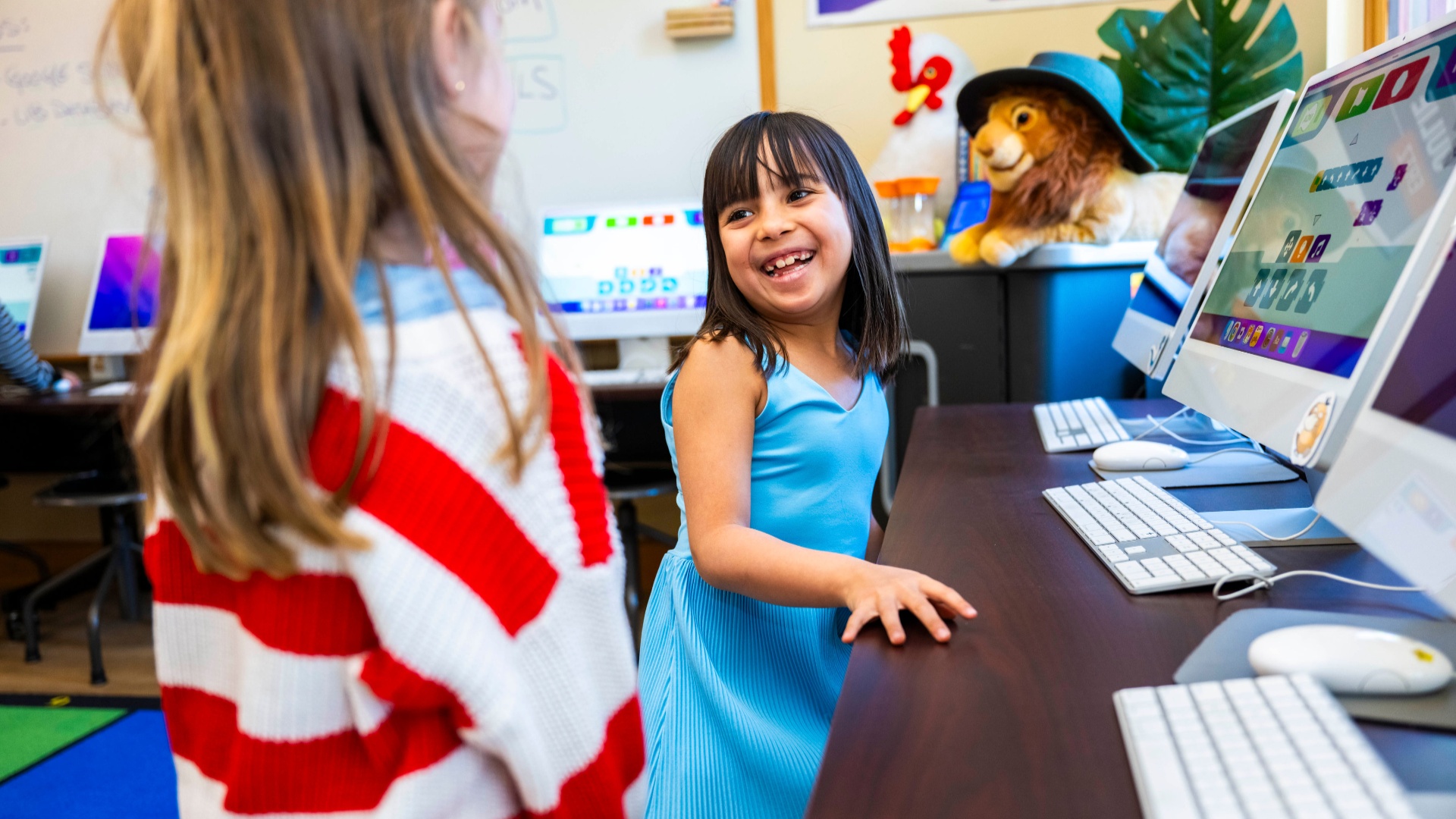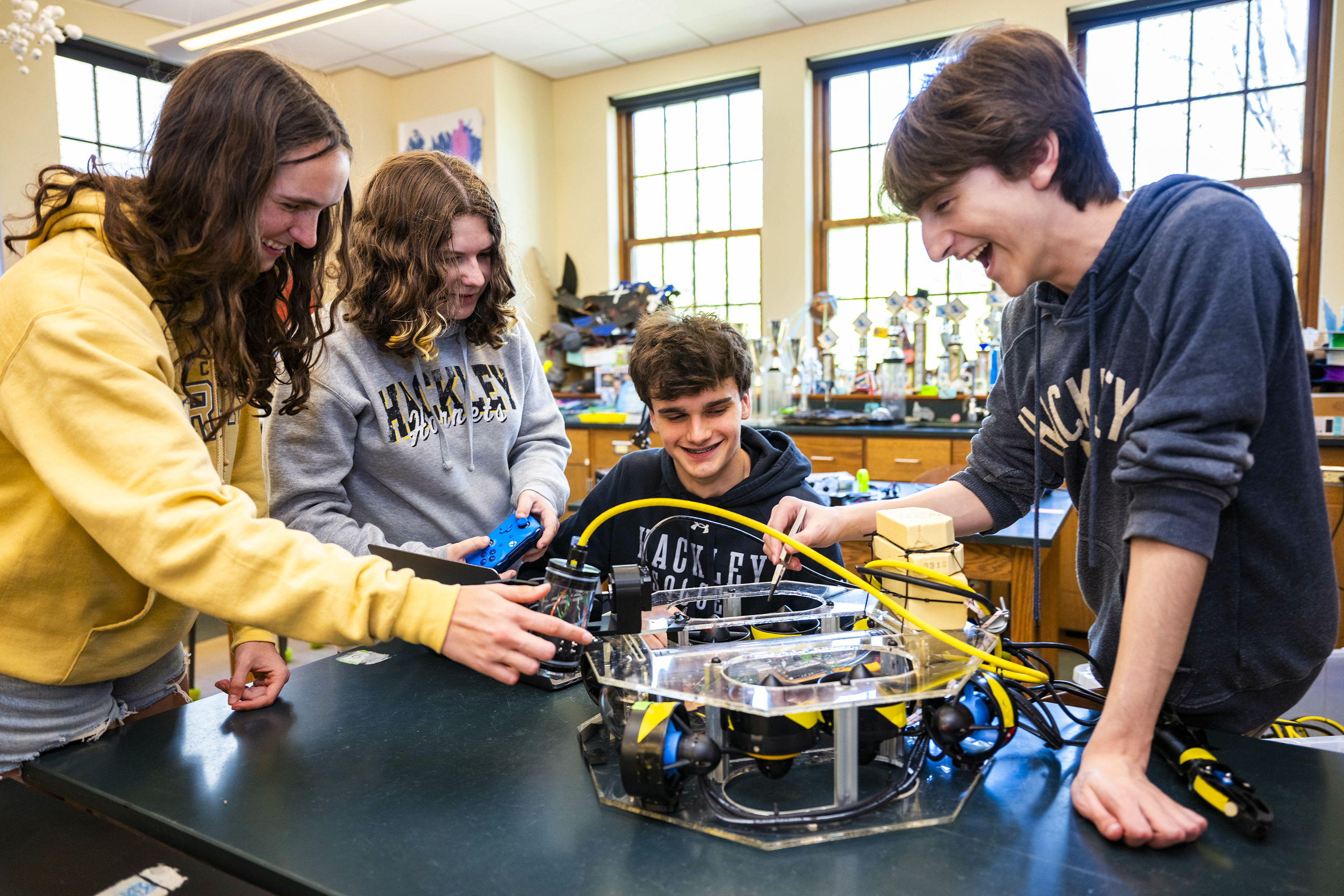The Lower, Middle and Upper School divisions are seamlessly connected, offering students opportunities to share their learning across grades. As students progress from kindergarten through the Upper School, they take increasing ownership of their education, building confidence, independence and a lifelong love of learning.

Lower School
Foundations in Collaboration and Kindness
In the Lower School, collaboration and kindness are at the heart of a rich and engaging academic experience. Core studies in literacy, math and social studies are complemented by science, Spanish, technology, music, physical education and library. Social-emotional development is thoughtfully woven into the program, ensuring students grow as engaged learners and caring individuals.
Middle School
Exploration, Curiosity and Balance
Middle School is a time of exploration and growth. Students channel their energy and curiosity into a balanced program that nurtures character, scholarship and achievement. Core courses in English, history, math, science and world languages (Spanish, French, Chinese or Latin) are enriched by computer science, health, study skills, visual and performing arts, physical education and interscholastic athletics.


Upper School
Owning the Journey
In the Upper School, students fully embrace their passions through a dynamic course catalog that encourages deep learning. They become historians, authors, scientists, researchers, artists, musicians and athletes, engaging in opportunities like publishing independent research, traveling the world as student delegates, and completing capstone internships. At Hackley, students discover that “it’s cool to care,” and their engagement shines through in both their learning and their community connections.
Hackley’s K-12 academic program is a journey where students are empowered to reach their fullest potential at every stage. To learn more about the unique opportunities and experiences in each division, visit our Lower, Middle and Upper School webpages.